Filming Techniques: The Evolution of Good Movies
What comes to mind when a person would name good movies? As a phrase, it is ubiquitous and vague and because of the significant variety in movies over the years. This makes it a difficult task to consider, particularly when the audience either is a general moviegoer or a specialized audience. At present there has been significant research done toward what constitutes a good film 1 2 . The average moviegoer however, refers to either Empire 500 3 or the most popular names on IMDb (who made a 250 movie list). This is mostly because they have already taken aspects to consider for a movie to be qualified as either good or bad. And in all of these databases, the point of filming techniques – in this article, defined as how the film uses camera angles, soundtrack, acting cues, and set layout in its story, characters, environment, and ambience – is the most important aspect they will consider.
And without a doubt, techniques have a phenomenal role to play. It is a significant and important element in a movie as a result of which a movie like the 1957 epic Ben Hur (starring Richard Burton) is considered and appraised constantly as a classic. Yet, the same is said of Pulp Fiction, a movie made by Quentin Tarantino and starring John Travolta, Uma Thurman, Samuel L. Jackson and Bruce Willis, is also considered a good movie (perhaps a classic by some, if not all 4). The same debate is carried on in multiple genres and various movies.
Therefore, let’s begin at the beginning of motion pictures. And therefore, consider movies in the context of how good films can be identified based on something which was used that was unique for the time. For that matter, we will also consider aspects of these films which form an important milestone in terms of standard Hollywood method 5.
The Origins of Filming Technique
With respect to filming techniques, most of them which we know and are familiar with now originate from silent movies. Nevertheless, most of these movies are “lost films”, with some that have survived providing an insight to filming techniques (camera angles, visual cues, the stage on which the movies are set). Nevertheless, there are two significant silent films which are very significant for their historical, cultural, and methodological impact on filming: the 1916 D.W. Griffith movie Intolerance and the 1927 German movie Metropolis. Both are available for viewing on Youtube as they are (mostly) in Public Domain, and can be seen at any time for one’s viewing pleasure.
What makes these two movies significant? How did they have an everlasting contribution towards cinema, so much so that they have been cited here as the original precursors to modern Hollywood movies?
D.W. Griffith’s “Intolerance” (1916)
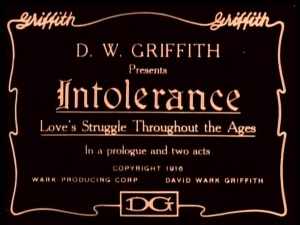
Well, let us consider the example of the older movie amongst these two mentioned – D.W. Griffith’s “Intolerance”. More specifically, “Intolerance – Love’s Struggle Throughout the Ages”. It has been talked beyond words to describe, and is often cited as amongst Hollywood’s golden gems 6. What makes Intolerance stand out, requires us to consider three aspects:
- D.W. Griffith, prior to this film, had made the 1915 silent film The Birth of a Nation, which had earned notoriety for how it portrayed the United States after the Civil War (e.g. the way it glorified the Klu Klux Klan) 7. Because of the backlash which had been driven by The Birth of a Nation, Griffith had a personal motivation behind making Intolerance not only a film which directed itself onto its opponents and detractors, but also at society in general 8 9.
- The atmosphere which is built through the use of lighting, camera angles, even camera motion. With that said, this movie is also by the characters themselves who make use off visual cues and subtle facial expressions. While these aspects are now considered standard, the movie also has a well thought out script – the use of four independent plays out of which two rely on historical perspective and artistic license (one being set in Babylon, and the other in Huguenot France), one representing the crucifixion of Christ, and one set in a more modern setting (circa 1916) 10. In all four plays, the most famous scenes are of Babylon which had introduced the capacity of silent films to show a “vastness” and “depth” of a city, that would later be used as an inspiration for Ben Hur 11. These experimental approaches are certainly significant because, without them, Hollywood would not be as famous as it is now.
It is also interesting to note that Intolerance shared a uniqueness for introducing strong female characters. Bearing in mind that the Suffrage was still ongoing and there was immense debate about women’s rights to vote, introducing strong female characters is unique for this movie. And it isn’t just one character: the three ladies representing “the wave of intolerance”, their sponsor, the wife of the man found guilty and sentenced to death by hanging, the shepherd girl in the Babylon play who gives her life for the man she loves are all played by female characters. - The score. While Charlie Chaplin’s movies had been known to have more “light-hearted”, or “audience charming” movie scores, Intolerance took that element and expanded it – battle scenes occurring for Babylon had a different effect than scenes from the play of modern America 12. The score as a result of Intolerance is so significant that movies would not be as deeply appreciated as they are today.
All three elements are so deeply rooted in movies seen nowadays, it would be a shame not to cite Intolerance as a milestone. Yet, nearly eleven years later, another film would have a significant impact on the world of cinema and film in general. This movie, is Metropolis.
Metropolis (1927)
Metropolis was made in Germany (Weimar Germany to be specific) by Fritz Lang and is based on the book bearing the same name written by Thea von Harbou. The plot as told by IMDb proceeds as follows:
“In a futuristic city sharply divided between the working class and the city planners, the son of the city’s mastermind falls in love with a working class prophet who predicts the coming of a savior to mediate their differences.” (Metropolis (1927), IMDb)
However, this movie has more than what meets the eye: the class divisions which are indicated and presented in this movie point towards obvious themes of capitalism, as well as the concepts of a workforce being infinite. While the book had significant portions dedicated to religious and occult themes, the movie avoided most and used the few which were significantly suitable to the science fiction universe which it had established. While movie adaptations of books are not new, books made to become movies are certainly unique and add to the general value of Metropolis as a silent film.
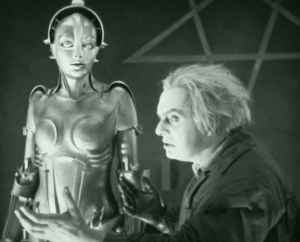
Nevertheless, Metropolis is an interesting specimen: It was the most expensive movie of its time back in 1927, yet it would present themes and perspectives that were entirely different from the ones seen in Intolerance (vastly unique to say the least) 13. The premise of this movie was almost foreshadowing of a modernistic world heavily reliant on machines, concepts that were put into perspective by George Orwell in his book 1984. How is this movie relevant, when the premise itself is science fiction? it is the first movie to be a science fiction film. Judge Dredd, The Matrix, Ghost in the Shell, the cross-cultural phenomenon represented by this film makes it a necessary watch.
Other aspects which make this movie significant include the use of “graphically enhanced” portions, the stage designs where the scenes were played and set, the camera angles as well as the lighting to compliment each and every moment in this movie, and lastly the score. Perhaps the most significant reason why this film is a landmark, is that it was a single narration (in its original form spanning three hours, but now available for two) of the inventor Rotwang, and how his own actions and the actions of the inhabitants of Metropolis (divided into classes), was a foreshadowing of chaos that will ensue when the utopia must make way for dystopia 14. In a way, the movie makes Science Fiction what it is today.
These two movies, however, are remnants of an era completely dominated by one name – Charlie Chaplin. Yet, these two movies have their contribution to movies which cannot be stated enough.
The Expansion of Filming Technique
While there are movies from the 40s, this author has decided in not taking them into consideration.
Because this isn’t for a thesis or an article, but is for general analysis by the readers, this portion will deal with movies one decade at a time, starting from the 1950s. Each movie will be considered based on some of the genres that have evolved over the course of time in movies: thriller, romantic, comedy, musical, fantasy, science fiction, epic/epic-drama, film noir. In the process, three independent movies will also be shown in order to indicate how filming technique – although making a movie unique – are definitely inspired from the original two movies already mentioned, and expand on them in due course.
Singing in the Rain (1952)
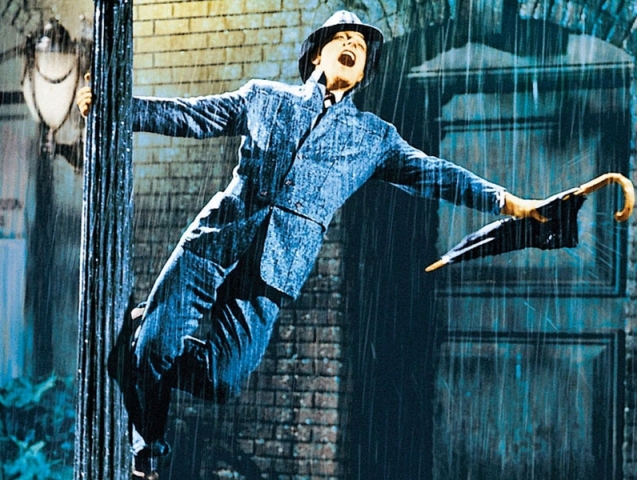
Genre: Musical
Plot: Gene Kelly plays the role of a silent actor of the 20s, Don Lockwood (Gene Kelly), who transitions to “talkies” (the term used to represent movies in which the voice of the actors could be heard) with his film The Dancing Cavalier (turning the original movie into a musical). For this movie to be successful, they try to dub over the voice of Lina Lamont (Jean Hagen) through the talents of Kathy Selden (Debbie Reynolds).
This movie is the best example of an influential musical, and making musicals a significant part of Hollywood tradition. A Gene Kelly classic, this movie stands out not just for its memorable music, but also because of its casting. But what makes it so unique in terms of film technique? Simple: The cast, the dancing, the music, the camera movement, and the editing. There is also in movie references to a famous musical of the late twenties, The Jazz Singer.
It should be noted that Gene Kelly was deeply involved in the making of this movie. Debbie Reynolds, although not initially considered in the beginning of this movie, played a significant role as a supporting actor in this movie after Gene Kelly was convinced to involve her. As mentioned earlier, the cast was integral to the success of this movie, and it cannot be stated enough how important all of them are. Perhaps the best way to experience this movie, is to watch two of the best known musical numbers, “Good Morning” and “Singing in the Rain”. It is a light hearted comedy, it has a wonderful score, the camera movement is astute and effective. And of course, it is also significant, because it introduced the musical as a filming technique. Put into perspective, Singing in the Rain was the breakthrough after which came High School Musical, Dirty Dancing, and even The Wizard of Oz. While the 50s also gave us one of the most deeply rooted classics of Hollywood – Ben Hur, The Ten Commandments – and otherwise (the 1954 Seven Samurai), the fifties is exemplified by this movie.
This influence is seen when taking into perspective how the movie would be referenced later. Walt Disney was given the rights to use the song “Good Morning”. Furthermore, A Clockwork Orange has the infamous rape scene in which Malcolm McDowell sings “Singing in the Rain” (and casually referencing the dance sequence itself). Regarding the aspect of audio dubbing, the 1982 movie Illusions took a more serious perspective through an African-American angle. These are some of the more notable references which indicate its influence.
Doctor Zhivago (1965)
Genre: Epic Drama/Romance
Plot: The life of a Russian physician and poet who, although married to another, falls in love with a political activist’s wife and experiences hardship during the First World War and then the October Revolution. (Doctor Zhivago (1965), IMDb)
The late Omar Sharif is often associated with Lawrence of Arabia, as well as Hidalgo and his underrated performance in The 13th Warrior. But it is in Doctor Zhivago (based on a book by the same name written by the Russian writer Boris Pasternak) where we see the single most important reason for why his performance is significant and why this movie, even now, is considered a classic of the late sixties. The presentation of the plot, the robust portrayal of Doctor Zhivago (played by Omar Sharif) and Lara Antipova (played by Julie Christie), and the brilliant score, as well as the use of camera angles and filming effects to indicate the state of mind of our cast – supporting and main. Where this movie stands out im terms of filming technique, is when it portrays the state of mind of Doctor Zhivago, as well as the Russian environment that was a product of the changing situation in the country (from 1913 through to 1922). Although addressed as an “epic drama-romance”, the romance is balanced out by the commentary on Russia and how the Soviet Union came into being.
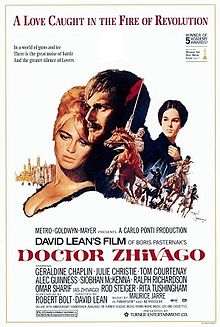
Why is this movie significant apart from the filming technique? It is because of how the movie balances the struggle of Zhivago as well as the love between Lara and Zhivago. The complimentary aspect of this movie which makes it significant and clearly something to be considered with respect to the sixties, is that this movie came around a time when movies tended to be goofy, or less involving towards their intended audience. The Adam West Batman series and movie, followed by the threat of Communism (satirized in the 1964 Stanley Kubrick classic, Dr. Strangelove) as well as the strong fifties influence that was common at the time (and can be seen from the movies Lawrence of Arabia and Spartacus), this movie is certainly a significant influence.
Taking into consideration the plot and the characters themselves, this movie uses a stream of consciousness and “phenomenological” approach. It takes some inspiration from the Russian school of motion picture production. These include the use of wide angles to portray the devastation caused by revolution; the silent moments to allow the audience to gauge the depth of the Russian winter; and the originality in how the story is hinting at the futility of the romance between the two (Zhivago and Lara) in the context of the revolution. All these aspects are significant because the movie – so far as filming techniques is concerned – would lead to a Hollywood trope that can best be described as “novel adaptations done right, or better”. Some of these examples include A Streetcar Named Desire, Into the Wild, The Russia House to name a few.
Doctor Zhivago also is significant because of the Russian perspective which is given – a fascination which continues today in Hollywood. So far as this article is concerned, another aspect which makes it a unique movie is that it represents the Russian perspective in a Russian setting (minus the actors). This is unique because later movies would significantly include an aspect of immigrant origins in their stories. Amongst the well known examples which present this case are The Godfather, Goodfellas, Scarface, Once Upon a Time in America, and even modern films such as The Revenant and Hidalgo.
The Godfather (1970)
Genre: Crime Noir
Plot: The story of the Corleone family, the story revolves around the Corleone family and their family intrigue through which they are establishing their roots within the Italian mafiosi crime families, the adaptation to change in the United States, and a perspective of the methods used by the Mafia to uphold their influence in the United States at the time.
Carrying forward from the point of “novel adaptations done right, or better” as mentioned in Doctor Zhivago, one could not have imagined a better movie released at the beginning of 1970, than The Godfather. This is especially important to mention because of Francis Ford Coppola, Marlon Brando and Al Pacino. This movie revived the careers of Francis Ford Coppola and Marlon Brando, and also introduced another brilliant Italian actor Al Pacino. The filming techniques used in this movie all boils down to the angles which Coppola uses, the improvision which was used in this movie to add to the depth and diversity of the acting, and the score by Nino Rota and Ennio Morricone (who composed the signature Godfather theme). Although these were used in movies like Dementia 13 (and make a profound return in Apocalypse Now, where they are modified to exemplify the social commentary of the 70s within the movie itself) it is in this movie where we see some aspects of Coppola that have become both pop culture and Hollywood standard usage in their own right.
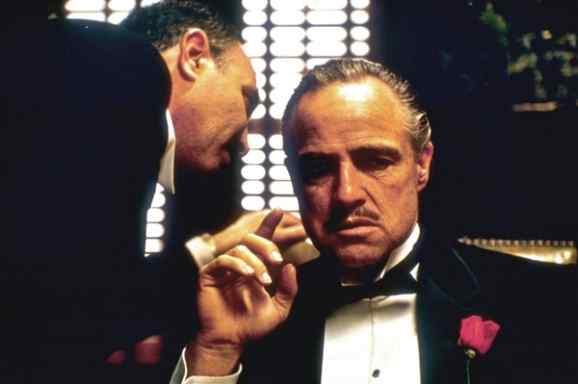
The use of an ambient tone, the oozing orchestral track, the method acting by Marlon Brando as well as the sharp and astute presentation by the rest of the cast (especially Al Pacino), is where this particular movie by Coppola excels. No doubts can be made here, particularly when one considers the degree to which the actors improvised – the scene of Luca Brasi wishing Don Corleone is one example 15 16 – and again, the angles at which the camera is set, followed by the attention put into making it a “forties era Mafia movie”, cannot be stated or explained enough.
What makes this movie even more significant is when we consider that, even after the release of Star Wars (1977) and Alien (1979, the Ridley Scott version), this movie is still talked and pondered and evaluated 17. There are some reasons for this being so: Francis Ford Coppola had altered the original book in his screenplay adaptation to give it a romanticized feel, which contrasts with the original book. While the production history regarding The Godfather has been analyzed significantly, it is the romanticized feel which makes it a movie referenced constantly in popular culture. Prior movies based on Italian Americans or on gangsters in general had failed because they were formulaic, whereas here even the violence is taken from the book and adapted according to how the Italian American mafiosi would perform it (something which would be significant in the movie Goodfellas). Because of this movie, gangster and crime genre integrated some of the lessons learnt from the movie (lighting for instance; or story; or character development). These include The Warriors, Carlito’s Way and Scarface, and even extended beyond them with movies such as The Shadow, Dick Tracy, Donnie Brasco, Public Enemy, Rock n’ Rolla, and Pulp Fiction amongst the notable mentions in the gangster and crime genre (implicitly or through in-universe variation).
Scarface (1983)
Genre: Action / Film Noir
Plot: Scarface is essentially the story of Tony Montana (played by Al Pacino) and describes his ascension within the Columbian/South American cartels to becoming the boss of his own empire based on the drug trade, and also shows his demise in a very famous end scene. The character arc of Tony Montana is made more involving through his interactions with his correspondences, and mainly through Elvira Hancock (played by Michelle Pfeiffer) and Manny Ribera (played by Steven Bauer).
There is no other way of stating this aspect, other than stating it bluntly: the 80s is a predominantly masculine era for movies. Terminator, Ghostbusters, The Shining, Miami Vice, A Clockwork Orange, If…, Indiana Jones, the Star Wars saga, Blade Runner, Top Gun, Die Hard, Full Metal Jacket, Platoon, Beverly Hills Cop I and II, Once Upon a Time in America, Hulk Hogan. All these movies have the stereotypical “Macho Heroes” being portrayed in them. And in all this, one would find it surprising who was considered as the most important actor to influence the 80s in terms of portraying the antihero: Al Pacino starring in Brian de Palma’s 1983 classic, Scarface.
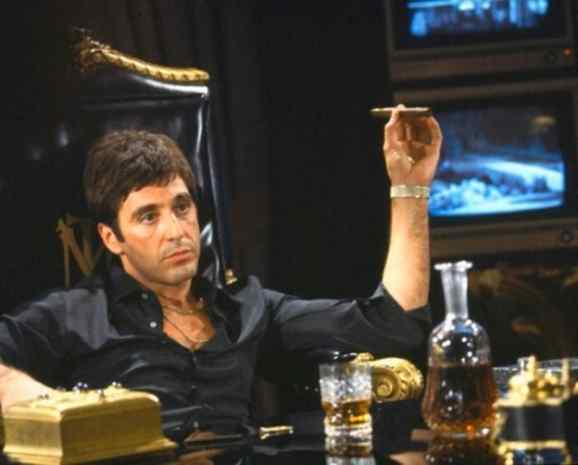
While it carries some of the aspects of The Godfather (the violence for instance; as well as character development) but expands on these through a variety of ways: most of the camera angles are uncomfortable closeups, ironical camera movement (e.g. the scene in which Al Pacino is working in a burger stand that is below a billboard showing the beaches of the United States), the strong use of score to enforce the concerned mood (success, dread, vengeance). These, combined with the acting by Al Pacino and Michelle Pfeiffer (who made her debut with this movie), are aspects which are tropes of the gangster and crime genre. What makes Scarface standout is that it is based on the experience of Al Pacino after watching the 1932 movie of the same name, rather than a book.
The movie also adds an 80s element to it through a montage in which the “success” of Tony Montana is expressed. This montage is also well handled because it shows the development of Elvira Hancock’s arc while also foreshadowing – through visual cues – the fate of Tony Montana. While Scarface developed further through comics, it did have a significant influence for future movies. Some of these movies, such as Public Enemy would use the approach to suit the story. Others expanded by adapting, exploring themes, or expanding on the script structure (its plot twists, high points, and general delivery) to involve the audience. Some of these examples include Carlito’s Way, Donnie Brasco, Dick Tracy, Reservoir Dogs and Snatch. Regardless, Scarface is a significant movie because it set the tone for the antihero, and of letting the audience garner their own perspectives on the roles the actors played.
The Russia House (1990)
Genre: Romance, Political Thriller
Plot: An expatriate British publisher unexpectedly finds himself working for British intelligence to investigate people in Russia. (The Russia House, (1990), IMDb)
This movie, from the moment it opens till it concludes, is a beauty. An adaptation of the book The Russia House by Jean L’Carre, this movie is a unique 90s movie which is overlooked and is underrated, even though one can make a strong case of filming techniques (especially with respect to camera movement and angle during screening, as well as soundtrack and acting) with this movie.
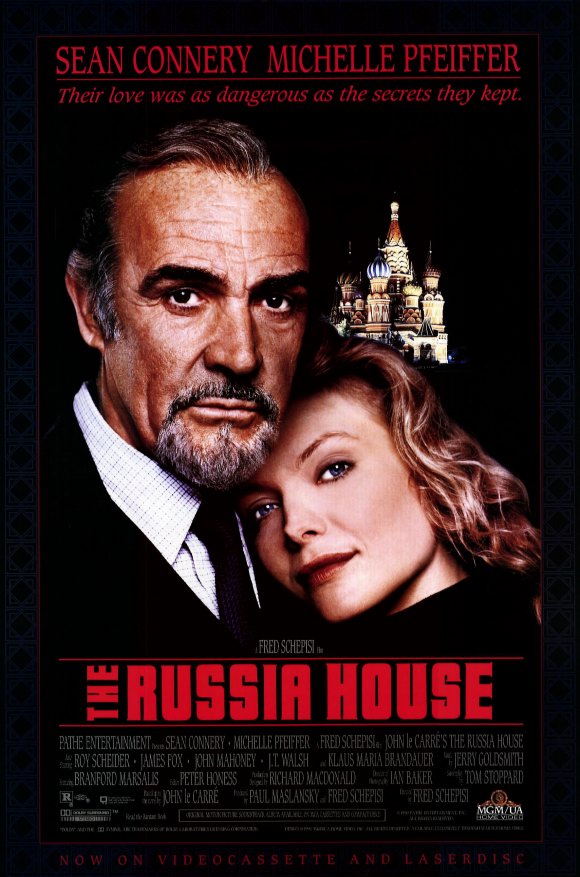
One should take this movie into consideration when watching the movie itself, that its plot is basic at best – it is at heart a romance movie and an average one at best. Yet, there are a few aspects to be noted about this movie which make it significant in terms of filming techniques.
The first is the acting: Sean Connery and Michelle Pfeiffer both performed their best given the circumstances and concerning the Cold War era in which it is set. They both establish a fairly decent time onscreen that, at least till midway of the movie, is well crafted and well thought out.
So far as filming technique is concerned, the script is given a significant degree of dedication by the two actors because it is decently paced. Combined with a very enriching score, it makes this a movie where the audience appreciates the wide angled camera shots, the representation of Cold War era Moscow, and the adaptation which exaggerated for the sake of the movie itself 18 19) is still decent. It can best be concluded by a fairly decent portrayal of the affection that the two characters feel for each other, in a setting which reflects a similar mood that is presented in Doctor Zhivago. In this movie, however, the in-universe perspective is well thought out because of a script that is self-sufficient and allows the characters of Connery and Pfeiffer to progress in a natural tone, and doesn’t hinder the movie.
We have a movie which essentially delivers and sets a tone for the 90s that would be remotely common amongst classics like Braveheart, Rob Roy, The Shawshank Redemption, Unforgiven, even Bond films like Goldeneye: the attention to setting the “mood of a film”. Although this movie is not the best work by either actors (Sean Connery with Dr. No, The League of Extraordinary Gentlemen, Indiana Jones; and Michelle Pfeiffer with One Fine Day, The Fabulous Baker Boys, Prince of Egypt and Sinbad: Legend of the Seven Seas), it certainly warrants being mentioned because of its presentation of filming techniques that were noticeable in the late 90s.
The Lord of the Rings: The Fellowship of the Ring (2001)
Genre: Fantasy
Plot: Frodo Baggins of the Shire embarks on a journey with Gandalf, Legolas, Gimli, Aragorn, and his fellow comrades Pippin, Merry, and Sam to destroy the Ring, which was passed on to him by Bilbo Baggins. This movie is the first part of the trilogy.
It’s the single greatest contribution to The Lord of The Rings after Ralph Bakhshi’s version. The wide angled shots, the well thought out script, the acting, the soundtrack, and the strong . Considering, also, that this movie took a strong liking – and arguably, a passionate dedication – to wide angles, sweeping camera movement, and occasional (but brief) camera closeups; followed it up with an obvious and remarkable soundtrack; and then proceeded to pace the story in a balanced form; this movie is a worthwhile addition because of its cinematography, as well as how it was able to treat its audiences with maturity that was expected to arrive 20.
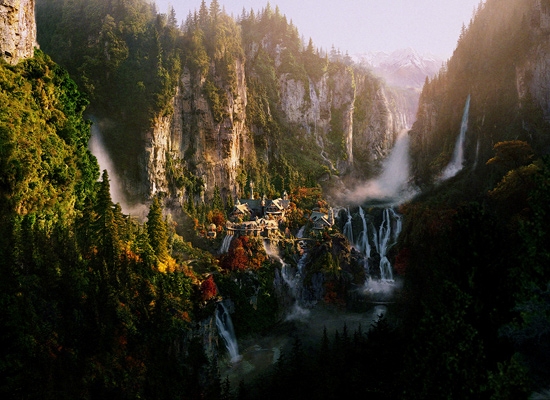
With respect to the movie itself, it is best to consider it from the experience one would feel while watching it. This movie can best be described as an experience – everything in this movie has been tailored to perfection: the music is iconic, the sheer dedication to the original work by J.R.R. Tolkiens, it clearly is a step up and is monumental because fantasy has had a significantly under-appreciative outreach in the live action perspective. With this movie, there was an approach that involved amalgamating lessons from epic dramas (Ben Hur, Ten Commandments) as well as action movies which dealt with fantasy themes to learn from. Where this movie is unique and stood strong, was how it used CGI and the scripts for each of the actors involved.
Where this movie clearly succeeds is the maturity that is put into the fantasy genre. Prior to this movie, fantasy was associated with either animated movies (The Secret of Nimh, The Dark Crystal, The Lord of the Rings) or not so well thought out movies (Dungeons and Dragons, Conan the Barbarian, He-Man). With the exception of The Never-ending Story, there are not that many significant names. In this movie, there can be clearly seen the use of narrative introduction, pacing, even the manner in which the set is explored and portrayed. For instance, the caves of Moria, the battle against Sauron, the scenes in which the battles occur and how each and every character knows the fate of their universe depends on their protecting the Ring bearer. The movies made after 2001 clearly took the audience seriously when they made these movies, and hence we have a more fluid and dynamic experience – something which was followed up with all three parts of the Lord of the Rings trilogy as well as independent fantasy based franchises such as Harry Potter, Chronicles of Narnia, and Hellboy to name a few. Other movies which came out after Lord of the Rings, in which elements of fantasy were integrated or used include Pirates of the Carribean, the 2003 movie. Other franchises which expanded and used the experiences from Lord of the Rings had mixed approached with some aspects that were interesting while others could have been better. The best example here is Underworld series, as well as the Resident Evil movies.
It is, however, the CGI element which makes The Lord of the Rings an important inclusion from a chronological perspective. The rendering of the environments are much more mature and show a significant departure from the movies of the 90s in which CGI was used such as Godzilla (1998), or Juraissic Park 2. The manner in which the CGI is used in this movie (and expanded on by other franchises) helped usher some very important steps to integrate animated characters into reality – an approach prior was seen in two movies, Cool World and Who Framed Roger Rabbit. It is here, where we find that movies such as The Ring, The Grudge, Shutter Island, Snatch, The Lego Movie to name a few. While there had been use of CGI, The Lord of the Rings is certainly a more significant name (when compared to the other franchises such as Harry Potter and Chronicles of Narnia) because it was able to remain relevant. Which certainly holds true for the trilogy.
Shutter Island (2010)
Genre: Suspense/Thriller
Plot: Leonardo di Caprio plays the role of a detective in the forties going to a penitentiary called Shutter Island to investigate a case and also find out more about the administration there.
This movie is a one time watch, in the opinion of the author. For one simple reason: the clever use of soundtrack, the excellent acting by Leonardo di Caprio, with its one most important contribution being (quite simply), the handling of the plot twist. While it is understood that not all movies made by Hollywood are seen to be perfect (Get Hard for instance), it is clear that Shutter Island does it right, for a quality which has been overlooked in this analysis: pacing and timing.
The thriller genre has been a Hollywood benchmark because of the contributions by Alfred Hitchcock as well as a few lesser known but still significant names such as Francis Ford Coppola’s Dementia 13. Thrillers and Suspense rely on scripts in which script pacing, score, camera angles, and general placement of everything in the set and the scene are important because of the reliance of plot twists. These plot twists are integral to the progression of the story, as well as the character development. Character development is mentioned here because the main protagonist is entirely dependent on the in-universe events for them to be able to proceed towards the source of the problem (which is also the climax of the movie). Therefore, in these aspects, Shutter Island succeeds because it has taken elements which Scorsese is known for and one of them, is pacing – how to balance the score, the mood, and the degree of close-ups to the point where it is perfect to shift gears and drift to the next scene. It is also an important name to mention because the story is bare boned, yet relies on in-universe symbolism for the viewer to understand the story as it unravels – hence the viewer will be invested in the story, which is significantly seen to be the case.
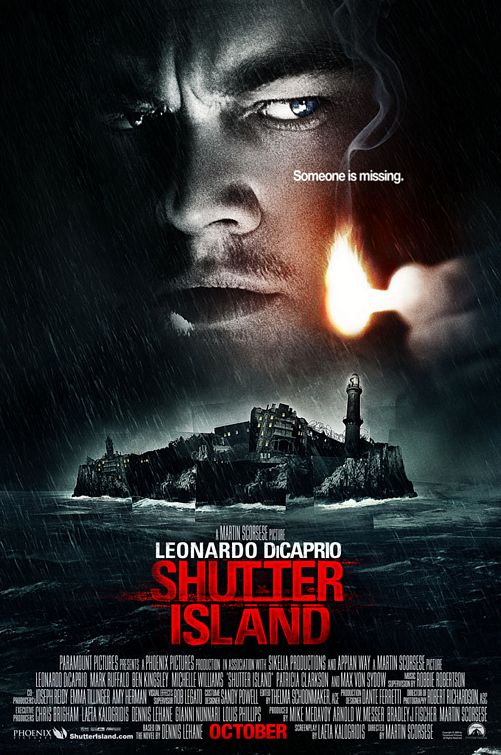
Is Hollywood holding a monopoly on filming techniques?
Hollywood may be the most significant contributor to movies (up there with Bollywood – which is Indian – and Nollywood – which is Nigerian), but there are a significant number of film industries which exist globally, all of whom have contributed to the world of cinema and are just as significant. While there are a numerous variety to mention in the case of filming technique, this article will only choose three that are not only important, but also are independent of Hollywood yet are important in terms of their delivery. These three will be listed in descending order of release
In The Mood for Love (2000)
Genre: Romance/ Drama
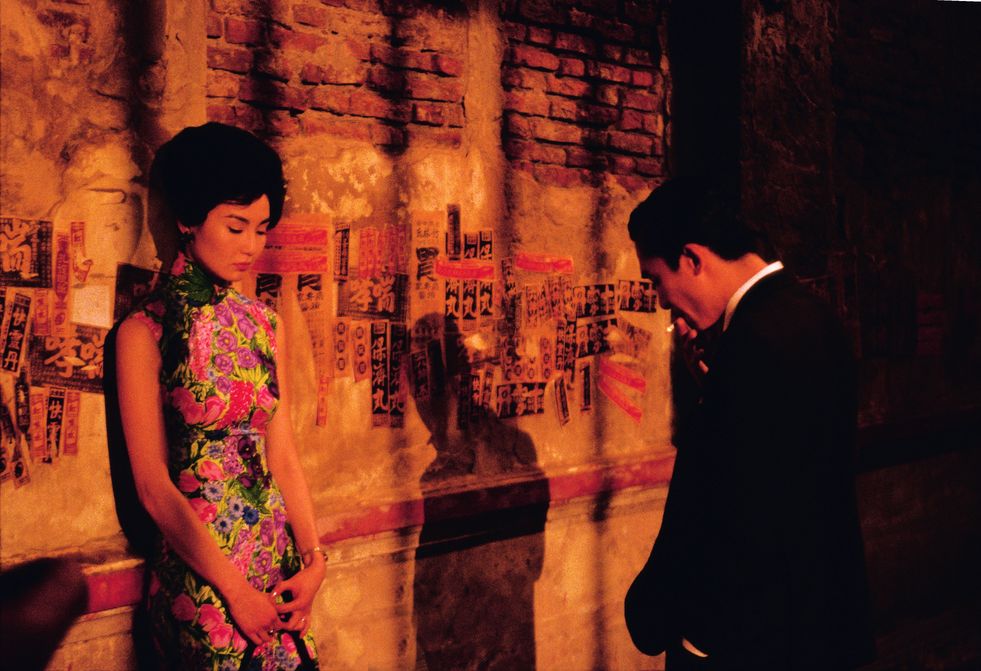
Plot: Set in 1960s Hong Kong, we are introduced to our two main characters, Chow mo-wan (played by Tony Leung) and Su Li-zhen (played by Maggie Cheung) who have moved into an apartment complex and are trying to adjust to their lives according to reasons which are personal and help in the progression of the plot.
This movie cannot be ignored for some of the reasons which are immeasurable. Although intended as a romance story, it succeeds to portray more than what essentially meets the eye. It is a fleeting, haunting, and engaging movie, with some exceptionally well thought out acting that provides not just a perspective of Hong Kong in the sixties but also in realistic social problems. it is made even better by a score that expresses the tone of the movie, the most famous of which is Yumeji’s Theme. The pacing of the movie is inclusive of a sequence of enriching camera angles accompanied by some of the most lucid and vibrant use of colors in a movie. Although it did not gain a significant number of rewards, it achieved acolades and was even mentioned as a significant movie to be seen by Empire 500 21.
Considering that as a movie it was the second of a three part movie series, it is nevertheless a good example of filming techniques on the basis of its score, of how the camera flows with the score and the characters almost as if it is identifying with them, and by the acting itself which is a delight to watch.
Siddhartha (1972)
Genre: Historical Drama
Plot: Siddhartha is the story of a prince bearing the same name, who is in search of enlightenment and has brought himself into leaving his father in search of this truth which consumes him for the rest of the movie. In hindsight, the whole movie is based on the struggles of Siddhartha in finding himself and the true enlightenment. Siddhartha is based on the book Siddhartha by Hermann Hesse.
Where this movie succeeds is in its filming technique. Unlike Bollywood, there is no musical number throughout the course of the film. In retrospect, it can be considered a more Western movie based on the way the pacing of the plot to allow the audience to absorb Indian society of that era, the soft lighting and toning, and a good casting. With Shashi Kapoor as Siddhartha and Simi Garewal as the woman whom Siddhartha marries in the movie; alongside Romesh Sharma as Govinda, the lifelong friend of Siddhartha who holds onto him until the end of his life, all play their part because of a well thought out script which is notably sincere to the book. This movie is able to represent its content using an interesting use of one of many filming techniques which is lighting and camera angles. It is noticeable in this movie, and has a remarkable role to play. By using symbolism to serve scenes where they can best be used to exemplify what is progressing, the lighting shows the character arc of Siddhartha. the camera angles compliment the lighting and provide a significant degree of subtlety – the character of Siddhartha is not good, nor is he bad: it is left to the audience to experience Siddhartha. In that respect this movie’s brilliance, lies in its presentation of Siddhartha himself – a presentation in which we become Siddhartha, rather than seeing or witnessing Siddhartha.
If… (1968)
Genre: Arthouse Drama
Plot: Malcolm McDowell plays the role of a student, Mick Travis, who is enrolled into a boarding school alongside other fellow students. The whole movie, therefore, shows how the character of Mick Travis matures and grows as the story progresses.
A British art-house movie starring Malcolm McDowell and directed by Lindsay Anderson, this is a fascinating British production which holds a charismatic representation of Malcolm McDowell and why he is a relevant actor even today. For a start, the story itself can be considered basic, yet equally intriguing.
And the story progresses brilliantly, because of the use of clever camera angles (something which would be mirrored by Stanley Kubrick when making A Clockwork Orange), the metaphoric use of effects, and engaging closeups which put the audience in a confused yet mesmerised state. This is illustrated when Mick Travis is being “punished” by being whipped by his headmasters, for instance, from the waiting through to the conduction of the punishment and its conclusion.
Where this movie also excels, is its use of satire and the manner in which the character of Mick Travis is liberal yet libertine in terms of his disdain of society. This is an interesting perspective which was commonplace in 60s British satire, and make this movie an interesting analysis of British customs and society in the 60s and how it has progressed since. British movies have undergone significant change and have expanded on their societal roots and perspective as can be seen from movies like A Clockwork Orange, The Infidel, Snatch, Hot Fuzz, East is East and West is West as well as Bend it like Beckham. While the newer British movies are integrating their cosmopolitan communities (which includes British Pakistanis, Anglo-Indians, Black British and Immigrant British), If… is a relic and a notable film because of the portrayal of the school system at the time. Another British movie which explored the theme of schooling (briefly) was Pink Floyd’s The Wall, a 1979/1980 musical which was based on the Pink Floyd album of the same name. Many of the themes explored in the film If… are touched upon: West is West, for instance, describes bullying in the opening scene of a British Pakistani that mirrors the bullying in If… .
Unlike Hollywood, British films (and European films in general) are more open to thematic exploration and have a culture of independent film making. Which is why filming techniques used in each film seen after If… is unique and reminiscent when compared with If… .
Filming Techniques: is There More to Learn?
While these few movies signify some of the developments which have occurred since the 1920s, there is still room for new and intriguing approaches. This article clearly left out some very significant names such as Stanley Kubrick; Citizen Kane for its use of camera angles and sharpness of camera movement; and Ghostbusters for its humor. It also limited itself to realistic movies with real actors rather than animated movies where there is equally unique diversity such as the Alexander Putrov directed and produced The Old Man and the Sea. Nevertheless, this article hopes to provide an appreciable understanding of why filming techniques are important and have a significant contribution to what makes a good movie worth watching and admirable – even timeless.
Works Cited
- Snelson, C., & Perkins, R. A. (2009). From Silent Film to YouTubeTM: Tracing the Historical Roots of Motion Picture Technologies in Education. Journal of Visual Literacy. Retrieved from http://scholarworks.boisestate.edu/edtech_facpubs/8/ ↩
- Antonescu, S. (2008). Television Scenography. Cinematographic Art & Documentation, (03), 20–22. ↩
- The 500 Greatest Movies Of All Time. (2008). Retrieved February 24, 2016, from http://www.empireonline.com/movies/features/500-greatest-movies/ ↩
- Waxman, S. (2013). Rebels on the backlot: Six maverick directors and how they conquered the Hollywood studio system. Harper Collins. ↩
- Snelson, C., & Perkins, R. A. (2009). From Silent Film to YouTube: Tracing the Historical Roots of Motion Picture Technologies in Education. Journal of Visual Literacy. Retrieved from http://scholarworks.boisestate.edu/edtech_facpubs/8/ ↩
- Decherney, P. (2015). Hollywood: A Very Short Introduction. Oxford University Press. Retrieved from https://books.google.de/books?hl=en&lr=&id=JATECgAAQBAJ&oi=fnd&pg=PP1&dq=%22D.W.+Griffith%22+AND+%22Intolerance%22+AND+%22Impact+on+Hollywood%22&ots=wBDfVBRd5b&sig=_YZ_-8tAajn3w3nKEsfAYYG2xHw ↩
- Geraghty, L. (2011). Directory of World Cinema: American Hollywood (Vol. 5). Intellect Books. Retrieved from https://books.google.de/books?hl=en&lr=&id=kFzQSQ2ed0QC&oi=fnd&pg=PP1&dq=%22D.W.+Griffith%22+AND+%22Intolerance%22+AND+%22Impact+on+Hollywood%22&ots=Hag7aAIgpm&sig=9IEo6c81BuTQ04iVdMEC59MymfE ↩
- Snelson, C., & Perkins, R. A. (2009). From Silent Film to YouTubeTM: Tracing the Historical Roots of Motion Picture Technologies in Education. Journal of Visual Literacy. Retrieved from http://scholarworks.boisestate.edu/edtech_facpubs/8/ ↩
- Decherney, P. (2015). Hollywood: A Very Short Introduction. Oxford University Press. Retrieved from https://books.google.de/books?hl=en&lr=&id=JATECgAAQBAJ&oi=fnd&pg=PP1&dq=%22D.W.+Griffith%22+AND+%22Intolerance%22+AND+%22Impact+on+Hollywood%22&ots=wBDfVBRd5b&sig=_YZ_-8tAajn3w3nKEsfAYYG2xHw ↩
- Intolerance (film). (2016, February 10). In Wikipedia, the free encyclopedia. Retrieved from https://en.wikipedia.org/w/index.php?title=Intolerance_(film)&oldid=704292768 ↩
- Allen, W. H., & Weintraub, R. (1968). The Motion Variables in Film Presentations. Final Report. Retrieved from http://eric.ed.gov/?id=ED027750 ↩
- Decherney, P. (2015). Hollywood: A Very Short Introduction. Oxford University Press. Retrieved from https://books.google.de/books?hl=en&lr=&id=JATECgAAQBAJ&oi=fnd&pg=PP1&dq=%22D.W.+Griffith%22+AND+%22Intolerance%22+AND+%22Impact+on+Hollywood%22&ots=wBDfVBRd5b&sig=_YZ_-8tAajn3w3nKEsfAYYG2xHw ↩
- The 500 Greatest Movies Of All Time. (2008, October). Retrieved February 24, 2016, from http://www.empireonline.com/movies/features/500-greatest-movies/ ↩
- movingpicturestube. (2013). Metropolis [Youtube full movie]. Retrieved from https://www.youtube.com/watch?v=YxpSXd8PTy4 ↩
- Hess, J. (1975). Godfather II: A Deal Coppola Couldn’t Refuse. Movies and Methods: An Anthology, 1. Retrieved from http://www.ejumpcut.org/archive/onlinessays/JC07folder/Godfather2.html ↩
- Simon, W. (1983). AN ANALYSIS OF THE STRUCTURE OF“ THE GODFATHER, PART ONE.” Studies in the Literary Imagination, 16(1), 75. ↩
- Simon, W. (1983). AN ANALYSIS OF THE STRUCTURE OF“ THE GODFATHER, PART ONE.” Studies in the Literary Imagination, 16(1), 75. ↩
- Eliashberg, J., & Shugan, S. M. (1997). Film Critics: Influencers or Predictors? Journal of Marketing, 61(2), 68–78. http://doi.org/10.2307/1251831 ↩
- Dalby, S., & Tuathail, G. O. u. (2002). Rethinking Geopolitics. Routledge. ↩
- Acland, C. R. (2003). Screen traffic: Movies, multiplexes, and global culture. Duke University Press. Retrieved from https://books.google.de/books?hl=en&lr=&id=8wIbg7fpPgMC&oi=fnd&pg=PP6&dq=%22Movies%22+AND+%22Motion+Picture+Presentation%22&ots=wMVq8l7-Fk&sig=6VDXG0Lk78ouu0QbcoXDhmRTSng ↩
- The 500 Greatest Movies Of All Time. (2008). Retrieved February 24, 2016, from http://www.empireonline.com/movies/features/500-greatest-movies/ ↩
What do you think? Leave a comment.











Thanks The Artifice for publishing such useful information – it’s why I read this website as opposed to any other.
Good to know 🙂
The most powerful thing in a movie is to feel that you are a part of it, through emotional breaks and shock breaks that is why Alfred Hitchcock among others is leader, and that is why Orson Welles and Eisenstein are such a great pioneers and teachers.
100% true.
Pacing is a huge factor for me in these movies you listed.
Agreed. Pacing is one of the most significant factors in these movies – or good movies, for that matter. Well pointed.
Excellent work on this heavily detailed article. I enjoyed the exploration of different film genres in the analysis. I’ll be intrigued to see what new techniques creators come up with in the future.
I actually did not know there was another film version of Lord of the Rings. I’ll have to check it out. But I’m glad you added it to this list of classics, it was a well structured list and it’s a perfect movie. Another studio worthy of mentioning is Time Warner. They make really good movies, some of which are actually better than Hollywood or Disney.
In The Mood for Love, my fav movie!
The most important think that movies nowadays seems to be forgetting: Respect your audience.
You don’t have to assume the audience will not understand the movie, you don’t need to explain everything that is going on, just do your damn movie and let the thinking for us here.
Actually, the director is supposed to explain absolutely everything, but in a seemingless way, the audience is not supposed to know…. there are many things the director should do, but you have to be good at it, something that lacks a lot in modern hollywood
I watched Twilight once and I felt like I was been waterboarded.
Twilight = greatest movie ever?
A good movie has to go beyond mere entertainment to become an icon, to influence the culture, to be memorable.
Many decades ago, when I was helping to run a SciFi fanzine, someone sent me a screenplay to read privately. The film hadn’t been made yet, and I had become used to reading and reviewing SciFi novels. In my return letter, once I had read the screenplay, I panned it mercilessly, pointing out inconsistency after inconsistency in the plot. I asked how on earth it could ever be made into a decent film.
What happened to the screenplay? Well, it turned out to be Alien.
I’ll be honest – I find what you’ve said hard to believe.
Its fascinating to say the least, but still hard to believe.
Thank you for a very interesting and well written article. I enjoyed it immensely.
I think the points made in the article are valid and true for a certain kind of storytelling – mainstream Hollywood, for sure – but they also work for some of the more leftfield stuff in theatre and TV too.
In the case of this article, there are four movies which are completely independent of Hollywood: Metropolis, In the Mood for Love, Siddhartha, and If…
All four are important because they have their own independent approaches to storytelling, all have their own well thought out and identifiable filming techniques, and all of them have a significance unique for their genres.
And on that note, Metropolis has been significantly justified. Heck, there’s a link to the movie which can be seen on its own.
So far as If… is concerned, that movie is like a template for Malcolm McDowell’s more controversial yet equally important role as the antihero in A Clockwork Orange. Even in Caligula, some of the aspects from this movie are influential and have a role to play there as well.
Nevertheless, there are portions which are dedicated to non-Hollywood related work.
I really like the selection of films you have discussed here. You have done a good job of analyzing film techniques. I think it would have been beneficial to understand why movies, such as Ben Hur are considered one of the greatest and what movie techniques are unique for that particular time period. Very interesting read overall, especially the breakdown by genre was a good call.
Ben Hur? Hmm, that is a fair point. Even though there have been significant and copious amounts of reviews and scholarly articles on its importance, in the context of this article, your point is valid because a little more explanation would have been beneficial.
The same goes for other movies like, for instance, Goodfellas, and even Harry Potter, Chronicles of Narnia and even Star Wars.
Thanks for pointing that out 🙂
I love movies where the audience gets to decide what they inferred.
I want to laugh, cry, think a little, be surprised. I want to forget that I’m in a theater and not be concerned with how cold the air conditioner is blowing. Come and consume me CINEMA!!!
An amazing movie, for me, has to have great characters(brought to life by brilliant actors),script, narrative, soundtrack and cinematography.
There is a cottage industry around the movie industry. It’s full of people explaining how to write the next blockbuster screenplay.
I don’t think that there are any sets of rules of what makes a great movie. It’s all down to inspiration.
Thank you for an interesting and thought provoking article
Great article. I wish I could add some incredible insight but I’m happy enough to have had a few lighbulbs go off as I read it.
A very nice article written with great style.
How thought provoking. I particularly love your film references and argument support.
I think you picked some great examples to make your point here. Meanwhile the article flows because you link them all to each other. Still, I was unable to see a very clear distinction between the movies because you were quite excessive with the categories each movie was great at.
Thanks for the comment.
Filming techniques are independent of which genre you pick. In essence, some filming techniques can only be admired and observed due to cross-genre influences. That is why I used a genre-related and chronological means of writing this article.
I thought this article was really interesting! What makes a good movie is a time old question film critics and researchers have been trying to answer since the invention of cinema!